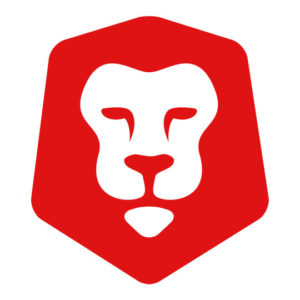Keep Your Courses Learner-Centric At All Times
At the center of any learning experience is the learner. In order to meet learners where they are in their learning journey, the goal should be to custom-design learning experiences that are relevant, engaging, and personalized.
Creating custom learning experiences can be difficult if you don’t have an experienced team that understands the best way people learn. To help L&D teams create immersive learner experiences, we’ve compiled 8 strategies that will ensure your content is always tailored for each individual learner’s needs.
“Every student can learn, just not on the same day or in the same way”
George Evans
Create A Learner-Centric Design Approach: Focus On The Person, Not The Process
If your course design is not learner-centric, you may find your learners:
- Disengage with the content
- Feel anxious or overwhelmed by it
- Stop working
If your learners don’t feel engaged and interested in what they’re doing, they may not be learning as much as they could because of feelings of pressure and stress.

Marten Newhall/Unsplash.com
A learner-centric design approach focuses on customizing the learning experience to the learner rather than customizing the learner to the Instructional Design. Furthermore, it seeks to understand all about the learners first before designing an experience for them.
These are some of the steps you could follow:
- Identify your target audience.
- Conduct a learner needs analysis.
- Dig deep into the data to determine what’s most relevant to learners.
- Use this data to custom-design individual, high-quality learning experiences. The goal is for each learner to have a custom experience that covers their specific needs.
Design For Cognitive Load: Make Sure Learners Can Keep Up With What Is Going On And Don’t Feel Overloaded
The purpose of customizing your content is to allow each learner to take away what’s most relevant to them—not everything! If too much information is presented all at once, it’ll be difficult for learners to understand, retain and apply new knowledge. Cognitive load is the total amount of mental effort that the learner requires to complete a task. It can be stressful if too much cognitive load is experienced at one time.

Tom Ramalho/Unsplash.com
One of the biggest challenges many L&D teams face when creating custom learning experiences is understanding how much learner-generated content can be included in their courses or programs. A learner-centric design process doesn’t presume what learners are capable of but rather understands how much they can take on while honoring their time and attention. To help meet their expectations, design custom learning experiences optimized for each learner’s cognitive abilities.
Here’s an example:
Let’s say your organization is rolling out new software to managers to make it easier for them to do their jobs. You want to create learning experiences that are easy for learners to understand, but you also need them to take this training seriously to learn how the software works. You might decide not to include lots of animations, screen recordings, or fancy visuals to keep the content as straightforward as possible.
Provide Learning Experiences That Are Hands-On And Interactive
Experiences that are engaging and practical allow learners to practice new skills and reinforce critical information. The more opportunities learners have to engage with the content of a course or program, the higher their level of success will be when the time comes for them to apply those skills at work. They’ll feel more confident in their abilities when given opportunities to practice.
You can add hands-on and interactive learning experiences to custom content by including activities that require learners to demonstrate what they’ve learned or apply knowledge in a practical, tangible way. You’ll be able to tell how effective these types of assignments are for your learners because you’ll be able to measure learner engagement and response as well as performance.
Build In Time To Learn At Your Own Pace: Allow Learners To Explore Topics If They Need More Clarification Or Want To Go Deeper Into A Topic
Learners enter training programs or courses with different backgrounds, knowledge, and skillsets. Some learners may be more advanced than others. Some might have the same level of expertise on a topic but may need additional time to absorb new concepts before moving on.
Great learning experiences allow for this flexibility when you create assessments that are appropriate for each learner. Each learner can work at their own pace; if they need additional time, you’ll be able to provide it for them without delaying the rest of your team’s training schedule or goals.

Crystal Y/Unsplash.com
You might also consider opportunities for learners to watch videos on key topics and review course materials when they have free time. Learners can take in the content on the go when they’re in a place where their attention isn’t divided between other tasks and responsibilities. This type of flexibility is beneficial for both learners and L&D teams alike since everyone can pick up right where they left off without missing valuable insights or experiences.
Ensure There’s Variety In Your Content Delivery Format So Learners Aren’t Bored Or Distracted
It is important to remember that learners can become bored or easily distracted when presented with content in the same format repeatedly. L&D teams need to find ways to keep learners engaged throughout the course—not just during the initial training sessions.
One way to do this is by offering custom learning experiences delivered in a variety of different formats. For example:
- You might choose one type of content delivery, like videos on key topics, and present it through several formats, such as long-form video tutorials (30+ minutes) and short-form (less than 15 minutes).
- Or, you provide both text-based tutorials and visuals like graphics to illustrate key concepts.
This variety will help keep learners engaged while also offering them the flexibility to work at their own pace.
Include Activities That Help Learners Practice New Skills As Well As Reinforce What They’ve Learned
As mentioned previously, activities that encourage learners to practice new skills allow them the opportunity to apply what they’ve learned in a practical way.
You’ll be able to measure how effective these types of assignments are by looking at learner engagement and response as well as performance. If you see improvements across the board, you know your courses are working for your learners!

Matt Bero/Unsplash.com
L&D teams can also include activities that help reinforce what the learner has already learned, so they have a greater capacity to apply knowledge in new ways. This will help deepen their understanding of concepts and encourage them to explore topics further—especially helpful if there’s more advanced or additional content and concepts that they will learn later on.
Great learner experiences provide opportunities for learners to:
- Reflect on what they’ve learned so far
- Identify areas where there’s still room for improvement
- Track their progress over time
This sort of deliberate practice helps them understand how to best apply new skills in the workplace or other real-world situations.
When learners can apply the knowledge they’ve gained in new ways, this will help them become more confident and feel a greater sense of achievement. These experiences can be very motivating since they could lead to improved performance across teams or departments—which is beneficial for everyone!
Foster Collaboration Among Teams And Peers By Encouraging Open Dialogue Around Topics Such As Common Challenges Or Best Practices
Learners who can connect with their peers—both inside and outside of the organization and on other teams—will be more willing to share any insights about applying new skills in new situations.
This sharing of ideas and best practices will give learners a better understanding of handling specific scenarios and lead to more in-depth conversations. L&D teams will also then be able to identify additional ways in which to improve learning experiences.
By fostering collaboration among peers, you’ll be helping:
- Build trust within the organization
- Encourage creativity to solve problems
- Create an open dialogue for learners to gain additional knowledge and skills
- Provide learners the opportunity to learn from team members who have more experience with certain content or topics

krakenimages/Unsplash.com
In this way, truly immersive learner experiences aren’t just about helping each individual but also encouraging teams to communicate and collaborate more effectively to solve problems together. This will help everyone feel a greater sense of connection and provide opportunities for members of different teams or departments to work together toward a shared goal.
Create A Feedback Loop So You Can Collect Data On How Well Your Training Programs Are Working For Your Audience
Creating a feedback loop is an effective way to understand how well your training programs are working for learners. By collecting this information, you can identify areas where there’s room for improvement and the best ways to improve learning experiences.
This type of continuous evaluation will help keep L&D teams accountable and ensure that your efforts are making an impact. It can also allow you to make course corrections where needed and identify additional areas that need attention or further development to create even more incredible learner experiences.
You’ll be better equipped to create the best learning experiences when you’re able to collect data on how your learning programs are working for learners, such as:
- What types of experiences do they find most engaging or effective?
- Is the information easy to understand?
- Do the visuals help explain key concepts?
This feedback loop will also allow you to get a better understanding of what your learners want and need in order to succeed.
Conclusion
Creating custom learning experiences that are learner-centered is an effective way to build immersive learner experiences. To achieve this, L&D teams should keep in mind 8 key areas:
- A learner-centric design approach
- Design for cognitive load
- Hands-on and interactive learning experiences
- Time built-in for self-paced learning
- Variety in content format
- Activities to encourage practicing skills and reinforce learning
- Foster collaboration
- Create feedback loops
With these considerations, you’ll be able to have a better understanding of how your learners think so they can take more ownership over their own learning process while being engaged at all times during the course. All of this can only lead your learners, and your organization, on the path toward success!
Furthermore, with custom learning experiences you have the opportunity to promote your company culture to those who matter most: your people! When they adopt this culture as their own, you’ll be left with a team of loyal, dedicated individuals who love where they work.










